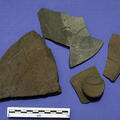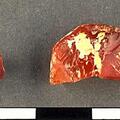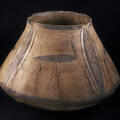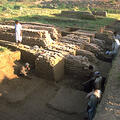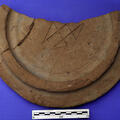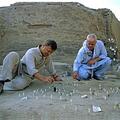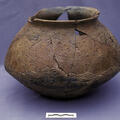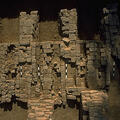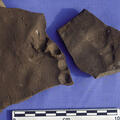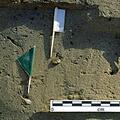Pottery sherds with potter's marks
The pit filled with kiln debris in Tench 54 had in it sherds from ceramic vessels with marks inscribed on their bases before firing and also from a flat inscribed disc or "bat" (at left) that was used as a removable base for throwing pottery on a

